Your guide to hotel districts in Paris
Identify the district or arrondissement that suits your budget
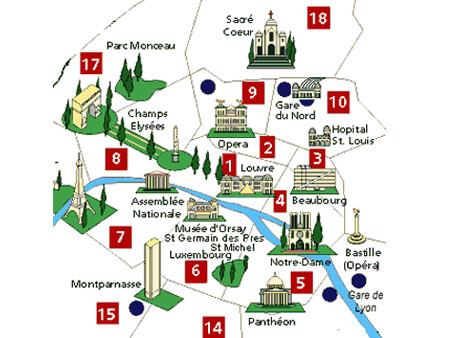
Like all major cities, Paris has a vast amount of hotels spread out throughout the whole area. Paris has 20 districts most of which will provide accommodation for the traveller, ranging from budget through to luxury.
There are various rules in place for size of rooms and facilities for a hotel to be considered of a certain star rating. It is important to know that these star ratings do not necessarily relate to the actual standard of the hotel, more that it fits the requirements of that star rating. We look in detail at this below.
The centre of Paris, where most leisure travellers visit key attractions, is one of the most expensive. However, there are so many places to stay in Paris, outside the centre, that you can easily choose a district to suit your needs, whatever your budget.
Where to stay in Paris?
Here we aim to help the first time visitor make an informed choice on suitable districts to stay in Paris. There are literally hundreds of hotel accommodation options in Paris, each one of them meeting the needs of a particular market.
There is no 'best' hotel or 'best' district to stay in, there are better districts than others for your own individual preferences and budget.
Arrondissements: official districts of Paris
The centre of Paris is divided in 20 districts (arrondissements) in a sort of spiral with the first arrondissement in the middle and the higher numbers on the outer circle. Paris is also defined by areas (quartiers), the only one visitors will constantly come across is the Latin Quarter (5th and 6th arrondissements).
Street names will have the arrondissement marked on them. Guide books and travel articles will often refer to areas by their arrondissement number.
The arrondissements that constitute the centre of Paris as far as the leisure visitor is concerned are arrondissements 1, 2, 5 and 6 which correspond to the location of the Louvre, Opera Garnier, Latin Quarter and Champs-Elysees. You pay a sizeable premium for most hotels in these arrondissements.
French hotel star rating system: what stars tell you
Every country has its own star rating system, there is no universal standard. The classic mistake is to think that the number of stars a hotel has corresponds to how good it is. In France this is definitely not the case.
The French system is not subjective and makes no attempt to grade quality, cleanliness or quality of service you will receive.
1-star hotels are economy properties. Double rooms must be at least 9 square metres, not including the bathroom, which my be en-suite or shared. The reception area must be at least 20 square metres.
2-star hotels have the same minimum room size as 1 star hotels, but staff members are required to speak an additional European language (other than French) and the reception desk must be open at least 10 hours per day. The reception area/lounge must be at least 50 square metres.
3-star hotels in Paris means your room must have a minimum space of 13.5 square metres including a bathroom. Otherwise 3 star hotels are very similar to 2 star hotels. The reception area/lounge must be at least 50 square metres. Staff members are required to speak an additional European language (other than French) and the reception must be open at least 10 hours per day.
4 or 5-star hotels in Paris means guest rooms are 16 square metres including bathrooms for 4 star hotels and 24-square metres including bathroom for a 5-star hotel. For hotels with more than 30 rooms, the reception desk must be open 24-hrs a day.
And for 5 star hotels, staff must be able to speak two foreign languages including English. 5 star hotels are also required to provide room service, valet parking, a concierge and, upon check-in, guests must be escorted to their rooms. Air conditioning is required.
Paris hotel districts and price - what you need to know
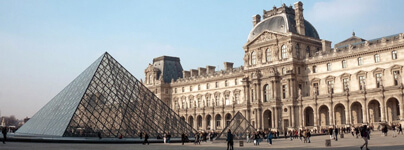
Hotel districts and price
The most sought after areas for leisure visitors are around the Champs-Elysees, Louvre, Opera Garnier and St Germain area of the left bank. You pay a sizable price premium for a hotel in any of these districts. Paris has an excellent public transport system that is very affordable. For the small inconvenience of 10 minutes on the Metro, you can reduce your hotel costs substantially. For those on a budget the hotel district around some of the main railway stations in Paris are particularly fruitful for value accommodation.
Gare du Nord, Gare de L'est, Gare de Lyon and Montparnasse are notable. If any of these are your arrival gateways in Paris, they are probably your benchmark district to check out. For those flying into Paris, all of the stations have very good links to the airports.
These railway stations are also public transport hubs with multiple Metro lines that will get you to wherever you want to go in Paris quickly and cheaply.
Other major affordable mid-range hotel districts are Grands Boulevards and around Bastille/Republique, just east of The Marais district.

Cheap hotel districts for weekends
Room rates reflect demand and in this computer age room rates are not fixed, what you pay reflects how hard the hotel finds it to get customers.
In districts sought out by leisure visitors there tends to be a premium for rates at the weekend. Conversely business districts struggle at the weekends as their core market disappears.
At the weekend probably the best two districts for value for money are the La Defense and Bercy districts. Neither is central but both have fast Metro and RER links that will get you to the centre in 20 minutes and save you a bundle.
August is the quietest month of year as most of the Parisians flee Paris and business grinds to a stop. Again the business districts are very cheap all of August.
Budget and luxury hotel brands in Paris
Accor have many branded hotel chains each targeted at a specific market from ultra low cost budget hotels of F1 Hotels to the luxurious 5-star hotels, their flagship brand being Sofitel. There is also an aparthotel brand, Adagio.
HotelF1 - ultra low cost budget brand
HotelF1 in Paris is the cheapest of the hotel chains. Costs are low as the locations are not central, most are around the inner ring road around Paris. Typically you'll have a 5-10 minute walk to the nearest Metro and a 20-minute journey into the centre of Paris. There is only a wash basin in the rooms, showers are external to the rooms on a shared basis.
ibis budget - economy brand
ibis budget hotels in Paris are located in similar locations to Hotel F1 around the inner ring road. Larger rooms with many hotels accommodating small families. En suite bathrooms.
ibis & ibis Styles - budget brands
ibis and ibis Styles hotels are spread across numerous locations in the city, some central. Compact, no frills budget rooms. ibis Styles tend to have larger family rooms and offer breakfast included in the room rate.
Mercure - mid-range hotels
Mercure hotels in Paris are comfortable traditional full service 3 and 4 star hotels, some relatively small, many in central locations in Paris.
Novotel: 4-star hotels
Novotel hotels tend to be much larger tower hotels in strategic business locations in the inner suburbs of Paris, offering 4 star full services. At weekends can offer great value to leisure visitors. One Novotel is the exception to the location rule and is very central close to the Louvre.
Pullman: 4- & 5-star hotels
Pullman hotels tend to be in the business districts, rather than the main central tourist sites of Paris. Invariably Pullman hotels in Paris are large modern hotel purpose built blocks with all the services you would expect to support the businessman at work.
Sofitel: 5-star hotels
Sofitel is the ultimate luxury choice with some of the finest hotels in Paris.
Paris hotel districts overview
There are a lot of things to consider when choosing where to stay in Paris. We have listed the various Parist districts for hotels, with an overview of why you might like to stay in each one.
Louvre

Centred on arrondissement 1, the Louvre itself is of course the major landmark. One of the most expensive areas to stay in Paris, though there still are 2 star simple hotels available, but at 3/4 star prices.
As far as leisure visitors are concerned the Louvre is just about in the centre of everything they want to see. Notre Dame is 5 minutes' walk east, the Latin Quarter you can walk across to, and going west you soon come to the Champs-Elysees.
The main department stores are also only 10 minutes' walk north of the Louvre.
The Chatelet Les Halles complex also within the local district has direct train transport to both Charles de Gaulle and Orly airports, just about the fastest and most reliable method to make your hotel transfer, plus also direct trains to Disneyland.
Opera
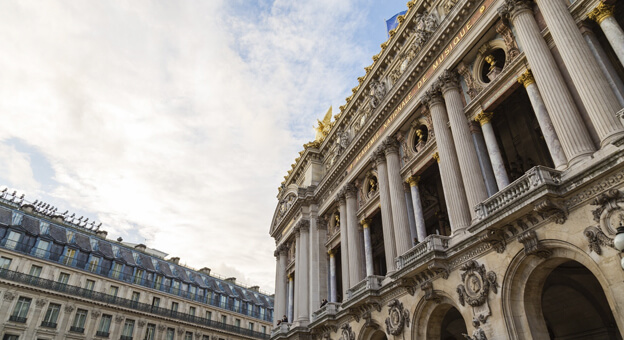
The area of Paris located around the Opera Garnier is famous for its cabarets, nightlife and the main department stores of Paris. Its also where you find some of the most exclusive hotels.
The area around Opera Garnier and Madeleine are geographically very, very central for which you pay a sizable premium.
However, immediately beyond the department stores is Saint Lazare Station, a major public transport hub.
Around here there is sea change in hotel prices with prices dropping dramatically. Just to the north and north-east of Saint Lazare station is a major cheap budget hotel area.
There is a convenient airport bus to and from Charles de Gaulle airport that has its Paris terminus besides the Opera Garnier. The bus service is called RoissyBus.
Champs-Elysees
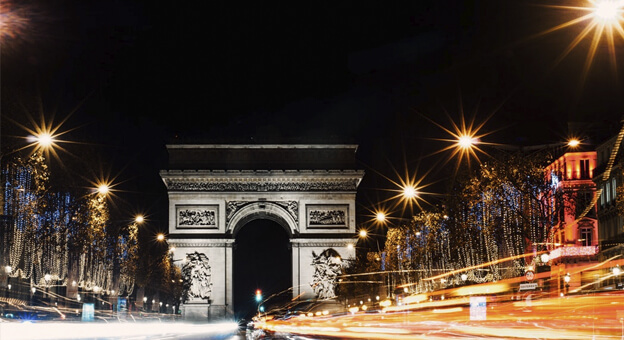
For the privilege of staying along or very close to the Champs Elysees you pay a hefty premium, some of the highest hotel room rates in Paris. Prices come down fast as you go north west past the Arc de Triomphe where there are some mid-range options that are worthy of consideration.
Line 1 of the Paris Metro runs the entire length of the Champs-Elysees and goes on to major visitor attractions like the Louvre and Notre Dame.
The Arc de Triomphe is a bit of a transport hub with airport buses run by Air France, 3 metro lines radiating in all directions and the RER line with frequent direct trains to Disneyland.
Grands Boulevards (arrondissement 9)
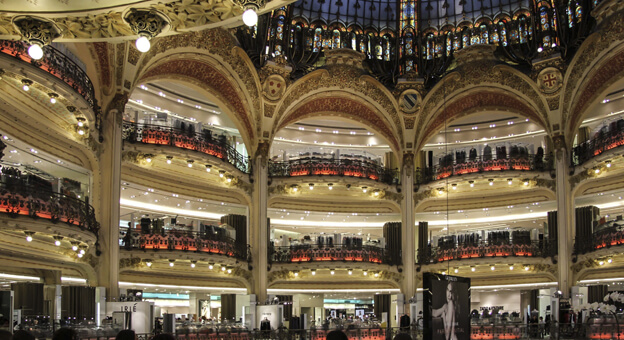
This is a loosely defined area just to the north-east of the very centre of Paris, but still easily walkable to the Opera Garnier, Louvre etc.
The attraction of the Grands Boulevards area for visitors is that it is very central, yet hotel prices are definitely a big step down from the options just a short distance away around the Louvre and Opera Garnier.
The Grands Boulevard hotel area reflect the 'value for money' attraction of the area and is full of mid-range and budget hotels including global chains like Ibis and Best Western.
Public transport is very good with an endless stream of buses every few seconds passing along the main boulevards on bus lanes as well as the Metro.
Many of the buses are going to Gare du Nord on the edge of the district with fast rail links to both main airports and Eurostar and Thalys rail services to Northern Europe. There is also an airport bus from Opera Garnier to Charles de Gaulle (CDG) airport.
Latin Quarter
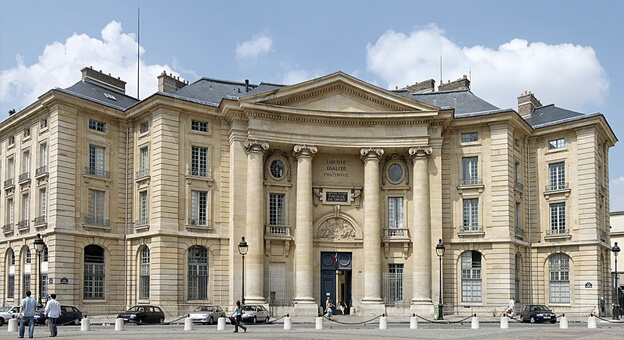
The Latin Quarter is technically centred around the Sorbonne, which has attracted students for many centuries, long before many countries in Europe had universities of their own.
Today the 'Latin Quarter' term is often used in a very loose manner to cover quite a large area including St Germain, Luxembourg Gardens, Pantheon, Botanical Gardens and Rue Mouffetard, famous for its street market.
Once you get away from the Sorbonne, St Germain and Pantheon (premium hotel area), a transformation takes place. A glimpse of authentic Paris that is attractive to visitors and accommodation that is relatively easy on the pocket and spread out. If you fancy going 'native' this is a good choice.
St Michel is the pivotal public transport hub of the district. Besides the Metro, from here RER line B trains provide direct and fast access to both Charles de Gaulle (CGG) and Orly airports as well as Gare du Nord station. RER line C goes direct to the Palace of Versailles.
Eiffel Tower

Hotels near the Eiffel Tower are spread over a wide area. No hotel is literally on the doorstep of the Eiffel Tower as it is sited in a large parkland area on three sides and the River Seine on the other. The Eiffel Tower itself is not in the centre of Paris.
Hotels within walking distance of the Eiffel Tower are mostly located to the west of the Eiffel Tower along the route of line 6 of the Paris Metro. There are some other possibilities just to the east of the Eiffel Tower around Invalides, normally more expensive than that found west of the Eiffel Tower.
A few of the hotels have rooms with views of the Eiffel Tower. This area isn't blessed with the greatest public transport links to the airports.
Gare du Nord
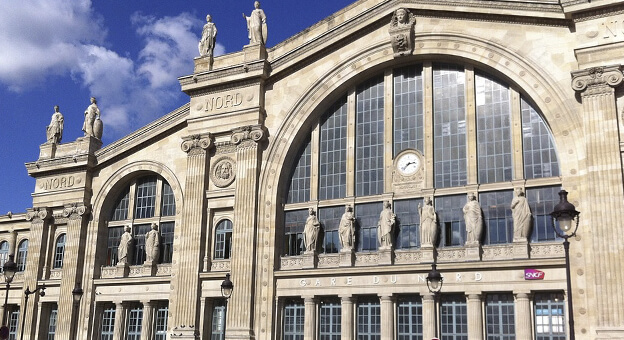
If you are on a budget, this is definitely somewhere to check out. Choices are largely made up of cheap, simple independent hotels and budget/ mid-range global chains like Ibis, Mercure, Holiday Inn and Best Western.
Very frequent fast RER trains connect Gare Du Nord to both main Paris airports, Charles de Gaulle and Orly. Gare du Nord has a major bus station above the railway platforms with local services to all the major sights and the L'OpenTour Paris hop-on, hop-off sightseeing bus also stops at Gare du Nord.
Gare de Lyon
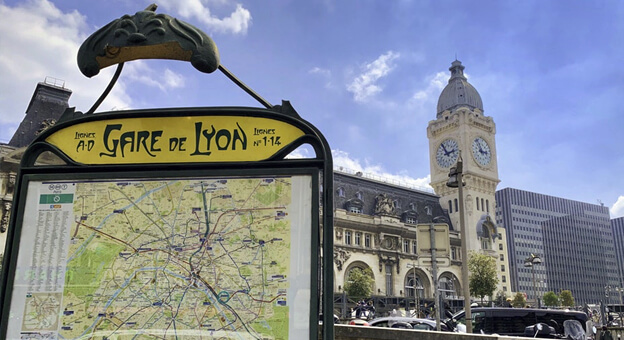
A good choice between local independent hotels and global chains, including Ibis, Novotel, Holiday Inn and Mercure and all grades of accommodation at competitive pricing.
Just to the south of Gare de Lyon is the Bercy district, one stop away on line 14 of the Metro.
The Bercy district is redeveloped and has a large number of newish, chain hotels that can offer very competitively priced rooms well below that of similar hotels 1-2 km away at the Gare de Lyon, especially at weekends.
Air France run a frequent airport bus from Gare de Lyon to CDG Airport too.
RER trains run direct to Disneyland and line 1 of the Metro goes direct to key visitor stations for the Louvre, Notre Dame and Champs-Elysees.
Montparnasse
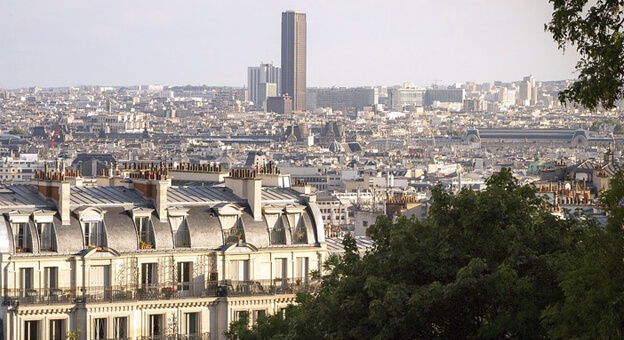
Dominated by the Montparnasse Tower with the railway station underneath. One of the few large skyscraper buildings outside La Defense. Unless you are on local business or using Gare Montparnasse there is little reason at first glance for visitors to seek out accommodation here.
However, for 'value seekers' looking for sensibly priced hotels well below the prices asked in the centre of Paris, Montparnasse has its attractions.
If you are using Orly airport this is one of the most convenient value for money hotel districts with good transport links. Air France run a direct airport bus to Orly airport and there is another one from nearby Denfert Rochereau.
La Defense
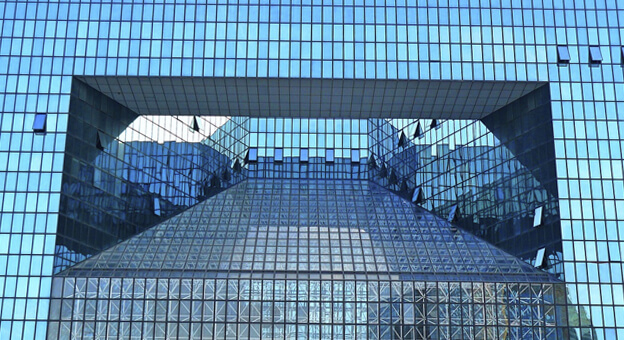
Business district to the west of Paris centre where line 1 of the Metro terminates. Unless you are on business the big attraction is very, very attractive prices on quite decent hotels at weekends and holidays (August) when the businessmen are away. Little attraction for leisure travellers during the working week.
Despite such a business orientation, La Defense has one of the largest shopping centres and also RER and Metro trains that will have you on the Champs-Elysees or Louvre in 15 minutes or so.










